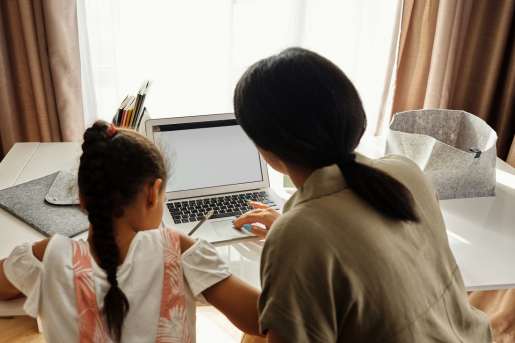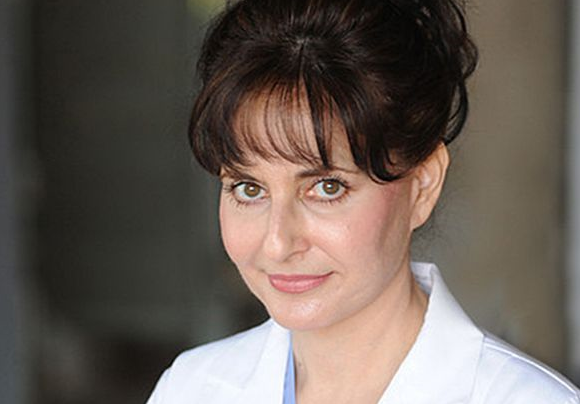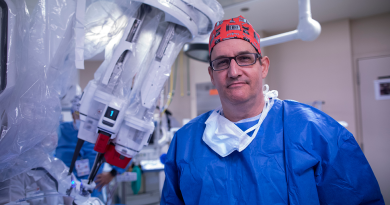Supporting early childhood development during COVID-19
My 15-month-old daughter grunted in frustration as she tried to tell me something I just could not understand. Then, the spaghetti sauce went flying.
When her daycare closed in the early spring due to the worsening COVID-19 pandemic, she was 12 months old. By then, she had gained the skill of saying “mama” and “dada,” babbling and imitating words, which is right on target for that age. But during the three months she remained out of daycare and staying physically distanced at home, her speech hadn’t progressed much more.
She was not consistently using any new words, which is the next step in speech development. When we went to her 15-month-old checkup, her pediatrician and I agreed she needed to start speech therapy. As a resident doctor in pediatrics, I have training in child developmental milestones and on how to encourage the development of skills in infancy and toddlerhood. With my own daughter struggling to communicate, I was sad to see her so frustrated and wondered if I wasn’t doing enough to stimulate her during this strange time of physical distancing.
Parents, we can make a difference for our children and our communities.

Let’s make appointments for our children’s regular check-ups. These visits with their pediatricians ensure they are continuing to grow well and meeting developmental milestones. This will set them up for success if they need to see any specialties and services. As a physician training in pediatrics, I can tell you we look forward to showing you your little one’s growth curves and discussing any concerns you may have.
Let’s keep our children engaged in virtual connections and playtime. These enable us to connect with friends and family regularly. A podcast from the Harvard University Center on the Developing Child emphasizes physical distancing is most important to curtail the spread of COVID-19, but this does not imply we should distance ourselves from the safe social interactions children can have with others.
By incorporating rhymes, songs, dancing and using props like books and puppets, the experiences become more social and interactive. Do not underestimate the power of playtime either. Playtime has an important role in learning to cope with stressors in a safe environment. We can try our best to keep playtime interesting. You can tell your little one is getting bored if she is whining or frustrated and struggling to engage in playtime. Try rotating toys by keeping some stashed away and bringing them out every week or so.
Let’s encourage our elected officials to stand behind early childhood development. We should make our voices heard by requesting government entities provide funding for early childhood development programs and ensure all children have access to the therapies and services they may need. We should urge financial support for families to have better access to essential goods and developmentally appropriate learning supplies, as well as parental coaching and mental health support.
Let’s also take care of our own needs as parents, so we can better take care of our children. Increased caregiver emotional distress during the COVID-19 pandemic is associated with subsequent child’s emotional distress. The Harvard University podcast reminds parents of the recommendations we have all heard on an airplane before take-off: “If a child is beside you, put on your own oxygen mask before helping put an oxygen mask on the child.” During this time, caregivers must take care of their own needs to better address their children’s needs.
Toxic stress can occur when a person is not able to bring their body’s reaction to stress back to where it was before the stressor started. This may include the body’s physical reaction to a short or long-term stressor, like higher heart rate, blood pressure and stress hormone release. Children need playtime, but parents need to have their own form of playtime, too. And yes, Netflix counts as parent playtime.
It’s hard to know how the change in my daughter’s routine because of COVID-19 impacted her speech development. Sometimes, I still doubt myself and wonder what more I could have done to encourage her speech with physical distancing restrictions in place. She has been in therapy for one month, and we are starting to see some progress, but it still feels like we have a long way to go. For now, we will celebrate with her and jump with joy for her new word this week.
Editor’s note: Views are the author’s own and do not necessarily reflect that of Baylor College of Medicine.
-By Natalie Guerrero, M.D., Ph.D., resident physician in the Department of Pediatrics at Baylor College of Medicine


